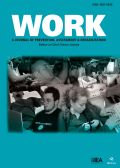Authors: Deng, Kai-Qin | Chen, Xin-Yuan | Yuan, Xian-Ming | Ren, Yan-Rui | Luo, Zhong-Mei | Li, Gang-Ying | Deng, Xia-Kang
Article Type:
Research Article
Abstract:
BACKGROUND: In a previous study, more attention has been given to the psychological state of doctors than to that of nurses although the workload, working hours, and patient contact time are generally higher for nurses than doctors. The current status of nurses’ perceived stress, work engagement, and perceived professional benefit during the routine management of the Corona Virus Disease 2019(COVID-19) pandemic and how their perceived stress affects the other two variables are topics that merit research attention. OBJECTIVE: In this study, the status of nurses’ perceived stress, work engagement, and perceived professional benefit during the routine
…management of the Corona Virus Disease 2019 pandemic was investigated to explore whether their perceived stress level has any effect on the other two variables. METHODS: The convenience sampling method was adopted, and 669 nurses from the First People’s Hospital of Jingzhou were selected to participate in this study. Questionnaires on perceived stress, work engagement, and perceived professional benefit were used in the survey, and the data were processed using the SPSS 20.0 program for the descriptive statistics, independent sample t -test, analysis of variance. RESULTS: The total score of the nurses’ perceived stress was 18.58±4.37 points. The total scores of their work engagement (43.32±14.01) and perceived professional benefit (140.23±17.75). CONCLUSION: The nurses’ total perceived stress score was at an upper-middle level, and their total work engagement and perceived professional benefit scores were relatively high. Overall, perceived stress has a negative effect on nurses’ work engagement and perceived professional benefit. That is, the higher the pressure perception of nurses, the lower the degree of work engagement and perceived professional benefit.
Show more
Keywords: COVID-19 pandemic, perceived stress, work engagement, perceived professional benefit in nurse
DOI: 10.3233/WOR-220498
Citation: Work,
vol. Pre-press, no. Pre-press, pp. 1-9, 2023
Price: EUR 27.50





